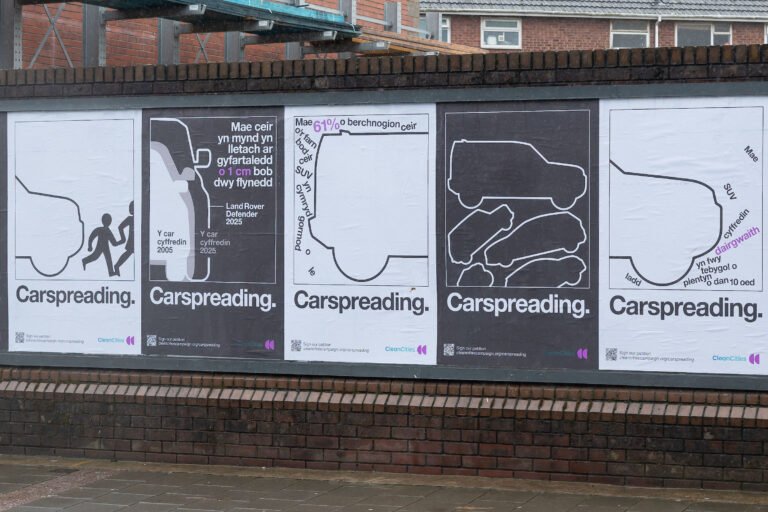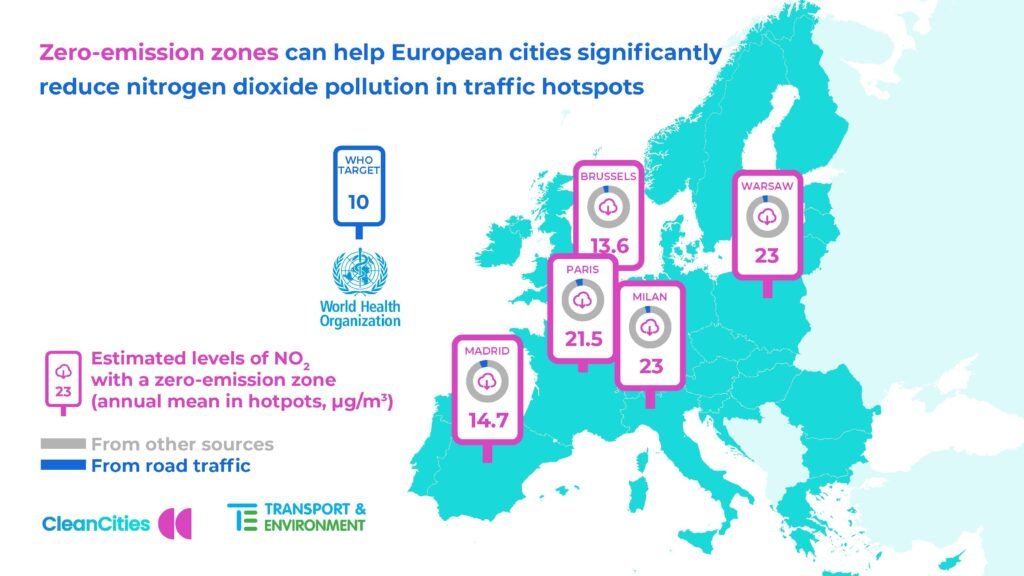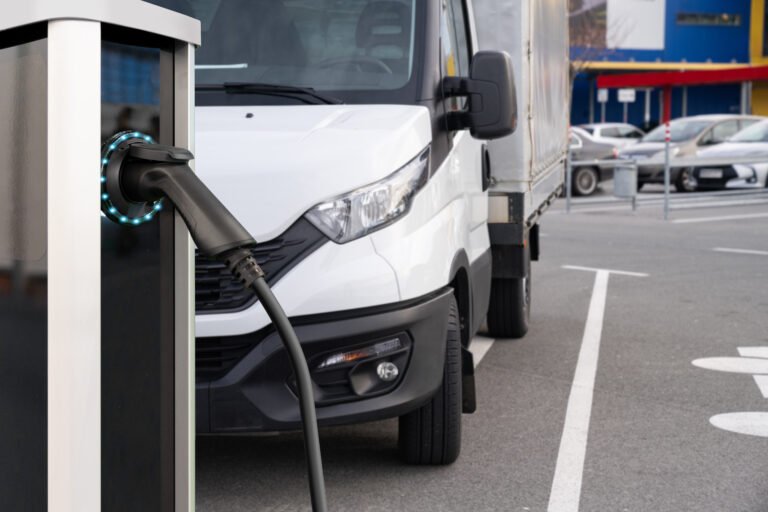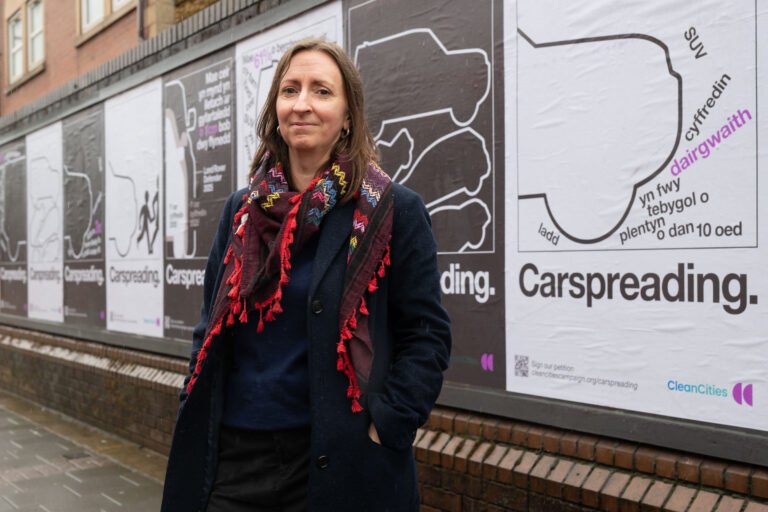
Zero-emission zones could significantly reduce toxic NO2 levels
Zero-emission zones can make a serious dent in harmful levels of air pollution
New modelling commissioned by the Clean Cities Campaign (CCC) and Transport & Environment shows that air pollution levels can be brought close to the science-based guidelines of the World Health Organization (WHO) if stronger action is taken on polluting vehicles (1). If emissions from other sectors are also tackled, for example industry and heating, even lower levels of pollution are achievable.
In a first-of-its-kind pan-European study, independent experts at Air Quality Consultants Ltd. modelled the impact of different policies aimed at reducing road transport emissions in 5 EU cities (Madrid, Paris, Milan, Warsaw and Brussels).
The research found that the introduction of zero-emission zones (ZEZs) – where only active travel and emission-free vehicles are allowed – could almost eliminate nitrogen dioxide (NO2) caused by local traffic: Reductions range from -91% (Milan) to -95% (Paris, Brussels) compared to the baseline scenario (2). Overall NO2 levels in the most polluted hotspots can be brought much closer to the 10μg/m3 limit defined by the WHO.

Today’s research also demonstrates that new air pollution targets proposed by the European Commission (20 µg/m³ for NO2 and 10 µg/m³ for PM2.5) are well within reach, with two cities – Madrid and Brussels – very nearly compliant already in 2027, three years ahead of the proposed 2030 deadline.
Why we need action
Air pollution causes at least 270,000 early deaths every year in Europe, including 1,200 children and adolescents (3). It can affect almost every organ in the body and is associated with a staggering list of health conditions, including asthma and stunted lung growth in children, lung cancer and heart disease (4).
The modelling comes as Members of the European Parliament prepare to vote on a Commission proposal to lower the legal limits to air pollution. However, the current proposal of the Commission for the revised Ambient Air Quality Directive (AAQD) does not align with the WHO guidelines, nor does it take into account the impact of introducing low-emission zones (LEZs) and ZEZs when setting the unambitious targets.
Today’s report shows that zero-emission zones alone could achieve NO2 levels as low as 13.6 μg/m3 in Brussels and 14.7μg/m3 in Madrid, without accounting for abatement measures in other sectors (5). These results are consistent with earlier modelling carried out by the City of Amsterdam (6).
Jens Müller, deputy director of the Clean Cities Campaign, says
“We know that pollution from tailpipes kills, and we know how to stop that. The EU must set legal limits that make the air safe to breathe and force cities and governments to act by requiring the introduction of low- and zero-emission zones.”
Alex Keynes, clean vehicles manager at Transport & Environment, says
“As it stands, the Commission’s weak targets are a win for diesel cars, but not for clean air. Europe needs a clean air law that protects citizens by aligning with the science and the recommendations of the World Health Organisation, not the demands of the car industry”.
NOTES
(1) https://cleancitiescampaign.org/research-list/how-low-can-cities-go/
(2) It is assumed that there is a 95% compliance rate with the ZEZ – i.e. 5% of vehicles will remain as internal combustion engine (ICE) vehicles in 2030, for example via exemptions for people with special needs cars. In addition, L-category vehicles, i.e. 2- and 3-wheel vehicles and quadricycles were not included in this analysis.
(3) https://www.eea.europa.eu/en/topics/in-depth/air-pollution
(4) https://www.rcplondon.ac.uk/projects/outputs/every-breath-we-take-lifelong-impact-air-pollution
(5) https://cleancitiescampaign.org/research-list/how-low-can-cities-go/
(6) The City of Amsterdam estimated that a zero-emission zone would reduce NO2 levels to 14.4 μg/m3 in 2030.
Read the briefing
CONTACT
Celeste Hicks (EN / FR)
Communications and Media Manager, Clean Cities Campaign

